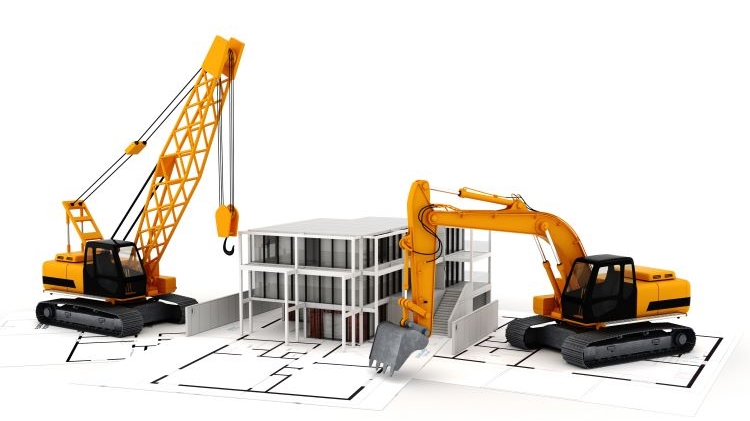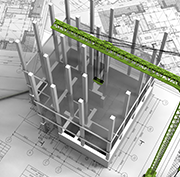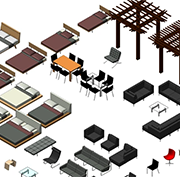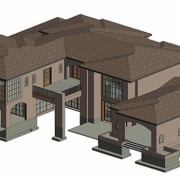BIM CONSTRUCTION SERVICES: 5 THINGS ARCHITECTS AND CONTRACTORS NEED TO KNOW ABOUT BIM

In due time, Building Information Modeling came as a disruptive technology into the AEC industry. And nowadays, any solid project cannot do without BIM modeling services. First and foremost, that’s because they help builders visualize what is to be constructed in a simulated environment to pinpoint any possible design, construction, or operational issues.
What’s worth being mentioned, BIM construction services have brought about a novel paradigm within AEC, the one that enables the incorporation of the roles of all stakeholders. And it was a big turn for the business. Ever since BIM developers like AutoCad continue to upgrade the opportunities it might represent for the domain. In this piece, we’ll outline 5 of the most outstanding things it offers today. Take a look.
#1. A Multipurpose Use

In practice, many architects and contractors primarily see the technology as a tool to actually create a model at the conception phase. But BIM construction services are way more than that. They represent a connected network around the project, which brings about efficiency throughout the whole life cycle. The latter also involves assessing, planning, engineering, building, and documentation. Such a data-driven approach streamlines the processes significantly.
What’s more, the data generated by BIM can be applied to set reduplicating processes according to the cost, execution, and installation procedures of earlier works. Even works that are untypical to a current one, such as steelwork and earthmoving, can make use of such a roadmap. It properly spells out necessary results thanks to past expertise.
#2. The Ultimate Advisory On Constructability

Architectural models, in many cases, might be insufficient for the building process as they do not have the cues necessary to construct from. The reason is that in an ordinary big project, trade partners will generate separate drawings or models that usually rule out the links to shared source information. As a result, stakeholders suggest tons of modifications, which sabotages the whole workflow and undermines the building itself.
BIM construction services address such an inconvenience by incorporating design detail in models. They are supposed to be bound to a master to anticipate expenditures errors and flaws. That way, BIM is viewed as an information hub that first instructs on constructability meaning if the layout and its elements are feasible. And then, it helps construct that design effectively.
#3. A Tool To Mitigate The Risks

BIM helps exploit the data in a way to prevent the labor-related risk within a large-scale project. It’s about the workers on the site doing their job. The BIM system can communicate where each gear goes, and builders provide that data to a robot on-place that coordinately drill the holes in precisely the correct spots. With no need for an interpretation, there’s way less possibility for inconveniences and more ability to automate. Some constructors even state that the use of precision tools in the domain to lay out floor plans and foundations can reduce layout times by 50% or even more overexploiting only manpower.
Speaking of data transfer to reduce the risks, BIM construction services always align workflows and centralize communication. This facilitates the monitoring of decisions and changes, which is a significant benefit in a modern construction landscape.
#4. An Available Digital Content Library

Over the years, BIM construction services have compiled a digital content library. The latter allows contractors, subcontractors, etc. to use it in new projects. The library might include interior design elements like faucets and furnishings as well as such things as chillers, fans, ducts used by the mechanical staff. Thus, when tackling a new BIM project, there’s no need to recreate the wheel and start it from scratch. The availability of great content saves time, ameliorates the realization of the desired operations of the systems and how different parts will perform together to meet the needs of the occupants.
#5. A Data-Сentric Culture Around The Technology

For the last decade, a lot of contractors have involved such a profession as a virtual design and construction manager (VDC). However, it turned out insufficient. These people might face job-satisfaction since the staff shows resistance to the capacities of data-driven practices to ultimately change their workflows. Of course, executives can handle this mission by interacting with the teams and showcasing practically the advantages of the VDC incorporation. For example, by showcasing the achievements in anticipation and productivity.
On the other hand, in order not to reshape an in-house culture and struggle with relevant consequences, turning to BIM construction services is always a way out. They are intentionally carriers of data-driven culture and can help make this transition “smooth” for architects and contractors.
Wonder how much high-quality drafting services cost? Check out the examples of our real projects with pricing.
BIM is flat-out more than a powerful visualization. So are the BIM construction services around it. They encourage better predictability on constructability and help handle the risks beforehand. They take care of processes that need to be automated and maintain favorable, data-centric culture to implement the designs in the most efficient way.
Willing to integrate effective BIM practices into your construction processes? Use our CAD modeling services and enjoy all the advantages the technology offers today to the field.












Great article which clearly outlines the many different advantages that the incorporation of BIM can bring to the construction industry. There is still an educational job to ensure widespread adoption, which we are proud to be part of.